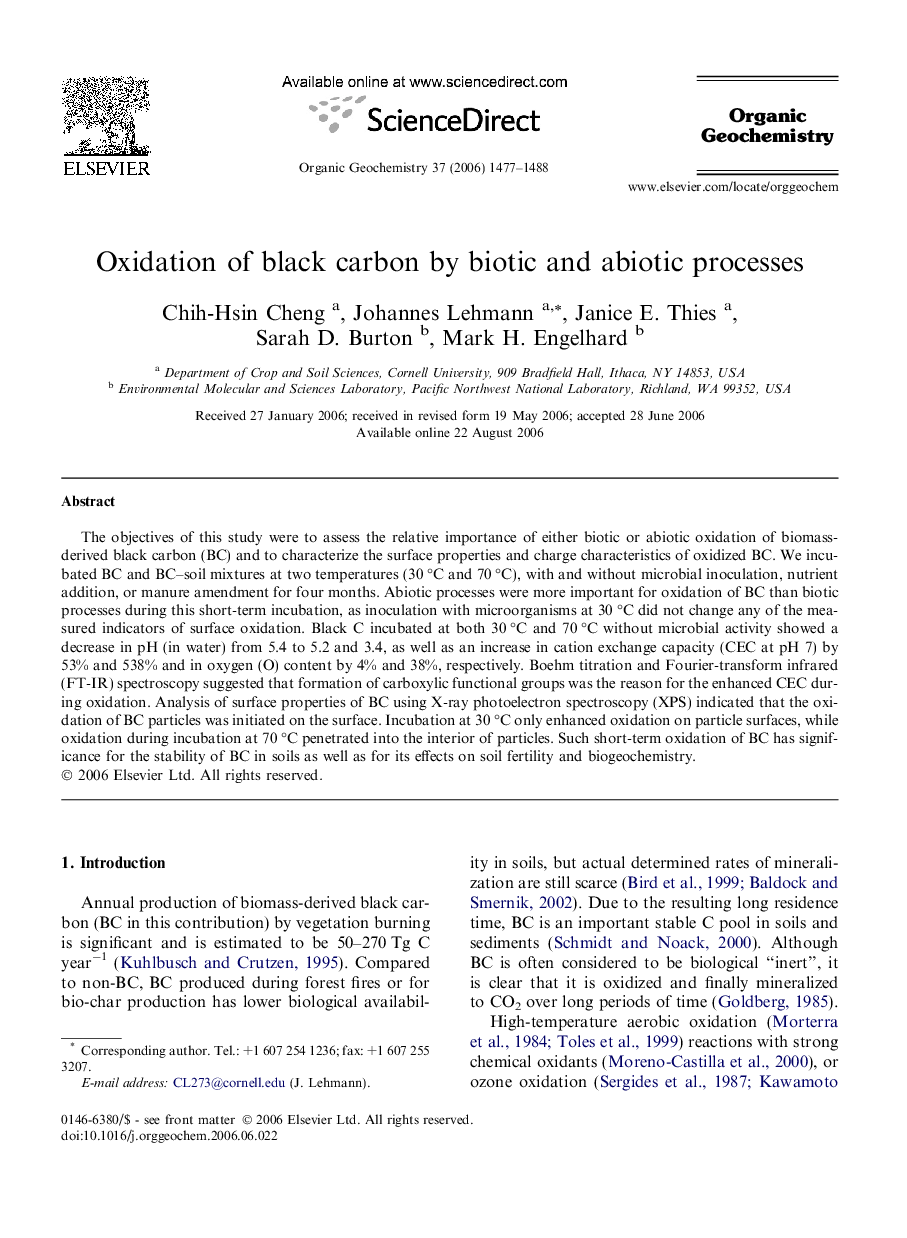| Article ID | Journal | Published Year | Pages | File Type |
|---|---|---|---|---|
| 5163683 | Organic Geochemistry | 2006 | 12 Pages |
Abstract
The objectives of this study were to assess the relative importance of either biotic or abiotic oxidation of biomass-derived black carbon (BC) and to characterize the surface properties and charge characteristics of oxidized BC. We incubated BC and BC-soil mixtures at two temperatures (30 °C and 70 °C), with and without microbial inoculation, nutrient addition, or manure amendment for four months. Abiotic processes were more important for oxidation of BC than biotic processes during this short-term incubation, as inoculation with microorganisms at 30 °C did not change any of the measured indicators of surface oxidation. Black C incubated at both 30 °C and 70 °C without microbial activity showed a decrease in pH (in water) from 5.4 to 5.2 and 3.4, as well as an increase in cation exchange capacity (CEC at pH 7) by 53% and 538% and in oxygen (O) content by 4% and 38%, respectively. Boehm titration and Fourier-transform infrared (FT-IR) spectroscopy suggested that formation of carboxylic functional groups was the reason for the enhanced CEC during oxidation. Analysis of surface properties of BC using X-ray photoelectron spectroscopy (XPS) indicated that the oxidation of BC particles was initiated on the surface. Incubation at 30 °C only enhanced oxidation on particle surfaces, while oxidation during incubation at 70 °C penetrated into the interior of particles. Such short-term oxidation of BC has significance for the stability of BC in soils as well as for its effects on soil fertility and biogeochemistry.
Related Topics
Physical Sciences and Engineering
Chemistry
Organic Chemistry
Authors
Chih-Hsin Cheng, Johannes Lehmann, Janice E. Thies, Sarah D. Burton, Mark H. Engelhard,
